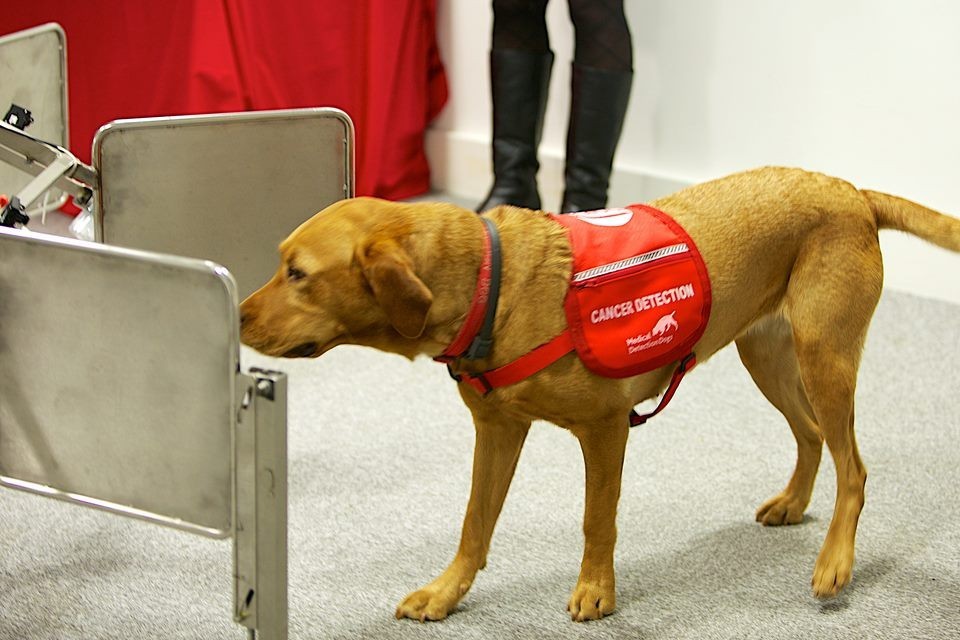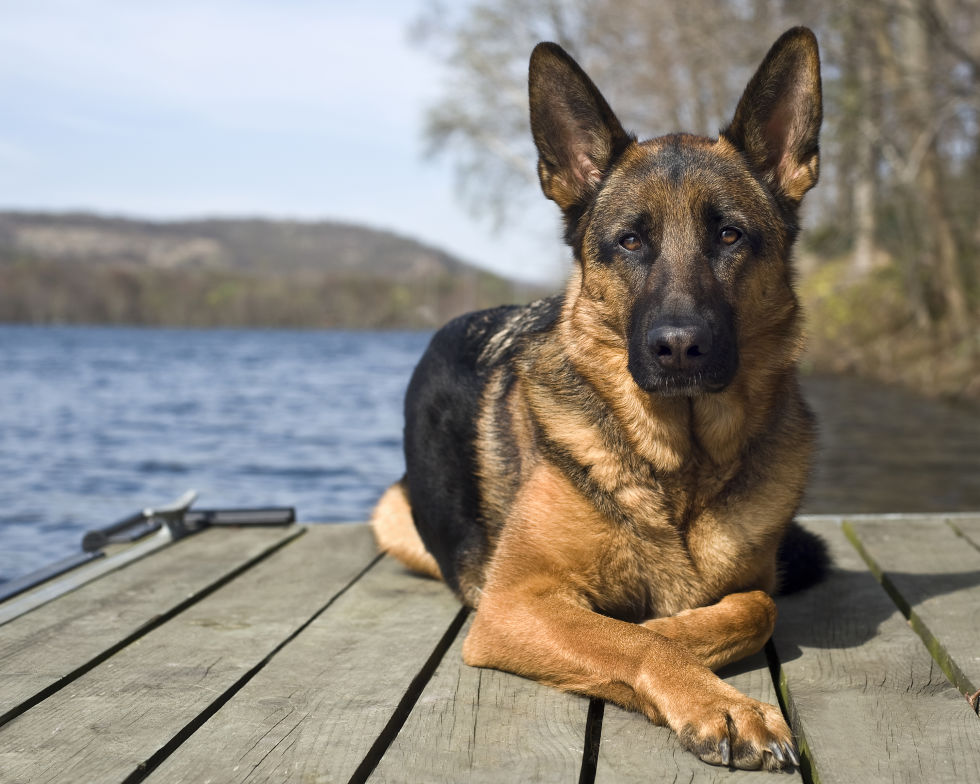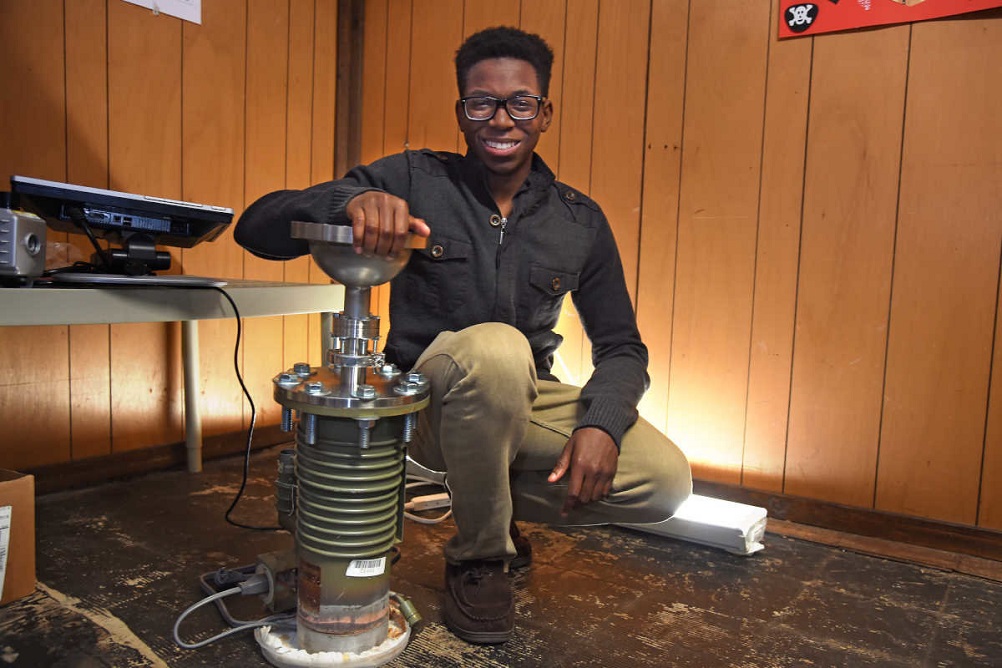More than sniffing out bombs and drugs, dogs are continuously being drawn into the fight against cancer. This is after it has been found that dogs can sniff out breast cancer.
This was achieved with just six months of training a pair of German Shepherds that turned out to be100-percent accurate in their new role as breast. This is possible through a technique that is fast, simple, non-invasive and cheap, as well as with much promise of changing cancer detection all over the world, most especially where detection facilities are not available.
‘In these countries, there are oncologists, there are surgeons, but in rural areas often there is limited access to diagnostics,’ Isabelle Fromantin, who leads project Kdog, told journalists in Paris.
Because of the late detection, most people in such countries do not get to receive early and life-saving treatment.
The team working on this began based on the assumption that breast cancer cells have a distinguishing smell which sensitive dog noses will pick up easily. What they did was to collect samples from 31 cancer patients at the first stage of the whole process.
After that was done, on pieces of bandage that patients had held against their affected breast, the team trained German Shepherds Thor and Nykios were able recognize cancerous rags from non-cancerous ones with the help of canine specialist Jacky Experton.
‘It is all based on game-playing’ and reward, he explained.
This lasted for six months before the dogs were put to the test over several days in January and February this year.

It was done using bandages from different cancer patients than those the dogs had been trained on, and one bandage was used per experiment, along with three samples from women with no cancer.
The trial had each bandage placed in a box with a large cone which the dogs could stick their noses into, sniffing at each in turn—four boxes per test.
A 90 percent pass rate was recorded in the first exercise which was repeated once with each sample, meaning there were 62 individual responses from the dogs in all. What this means is that the dogs detected 28 out of the 31 cancerous bandages correctly.
When the trial was done a second time, the research noted that a 100 percent score rate was achieved. This time around the dogs were placed sitting in front of the box containing the cancerous sample with their muzzle pressed deep into the cone.
Before this, there were various instances in which different dogs were able to detect cancer in their owners, as well as in others.
In fact, a report by dogsdetectcancer.org in 2015 stated thus:
Dogs can smell in parts per trillion. An example of this is: one cc of blood, diluted into 20 olympic sized swimming pools. The dog can smell with ease that there’s blood in the pool. Another example: 3 seconds in 100,000 years. Dogs smell like we see. We walk into a room and see the room; a dogs walks into the room and smells the room. We see a cut on our leg; the dog smells it. We have trained dogs to sniff gun powder, narcotics, missing persons, and now, finally, diseases.
The report went on to say the ability of dogs to smell cancer is because it has a particular smell, which even people get to perceive in the breath of sufferers when it gets to some stage.
“If we can smell it at stage 3-4, then, of course, a dog would be able to detect the scent much earlier, in stage 0, 1 or 2,” it added.
More so, there have been so many research works that have been done in the line of the ability of dogs to detect breast and lung cancers which happen to be the leading causes of cancer deaths worldwide.
Much earlier in 2013, there was a report in Telegraph.co.uk which told of a Psychologist, Dr Claire Guest whose dog was the first to detect her cancer. According to Guest, when her Labrador, Daisy, began to act strangely around her, she knew that something was wrong.
The irony was that it was a time when she was trying to teach the dog how to detect cancer through a controversial technique that uses the animals’ acute sense of smell to pick up chemicals given off by tumor cells.
According to Guest, the dog kept jumping on her until “One day she bumped into my chest with her nose. It was unusually sore, and there seemed to be a lump there. I had a fine needle biopsy, but it came back clear.”
“Had I not had Daisy’s early warning, I would have had a very poor prognosis,” she added. “I have my dog to thank for the fact that I’m standing here today.”
In the most recent successful test, the team involved said the aim of it all was to see if it can move from “conventional wisdom to real science, with all the clinical and research validation that this entails.”
While this study based on getting dogs to detect breast cancer from skin-touch samples, there are as well other research projects that are trying to get it further by testing canines’ ability to smell different types of cancer. in samples of the skin itself, blood or urine, even the air people exhale.
More so, the emphasis of most other research works is with samples of the skin, blood or urine. It could as well be through the air people breathe out.
The chances of surviving breast cancer 10 years after diagnosis can be as high as 85 percent in countries such as France. In less developed countries, however, it could come down to as low as 50 percent.
More so, according to the nationalbreastcancer.org, each year it is estimated that over 246,660 women in the United States will be diagnosed with breast cancer and more than 40,000 will die.















